Academic Research Report on Lever Style Inc.
Monday, June 16, 2008
The Relationship between a Corporation and its Workers
Executive Summary
The following investigation on Lever Style Inc. has no intention of simply criticizing this particular corporation or its partners. Rather, it is aimed at bringing out the essence of the
relationship between the corporation's overseas clients and its workers, with the purpose of allowing scholars as well as the general public to gain a better understanding of how much
the company's workers are earning per product compared with the amount Lever Style Inc.'s clients mark after the products are brought out to the market. The case should provide a
window into Chinese textile manufacturing in general.
In comparison with other China-based factories in the apparel and garment industry, Lever Style Inc.'s working conditions are much more advanced. Should factories be ranked under an A, B, C
scale, with A being the highest rating, Lever Style Inc. would be classified as a class A factory. However, even when employed by one of the most sophisticated employers in the industry,
workers are still unable to receive a wage that allows them to advance their place in society.
According to CLW investigation, after about 240 procedures to complete a piece of clothing, worker receives about 15 RMB ($2.11). Thus, a Banana Republic dress shirt charging $49.99 in market
price, a roughly four percent of it goes to workers' pocket. From our living standard research for workers, each year, to maintain a family of three, it would cost a worker's family
about $30,500 RMB. The expense /includes rent, utilities, food, daily commodities, and education for children.
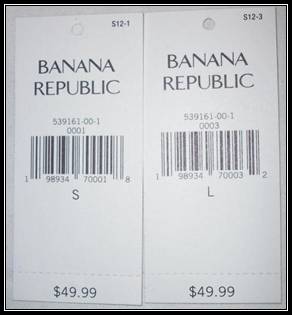
Banana Republic, one of Lever Style's clients
Workers face difficulties in providing their families with financially secure homes; they are forced to limit monthly expenses such as food and clothes to the very the minimum; and education
is a far and distant goal for them—they have no additional expenses to advance themselves or their children in terms of the knowledge and technical qualifications that society
increasingly requires. Thus, at least both the current and next generation of workers will continue to struggle just to get by and the vicious cycle of poverty leading to poverty will
continue (for details on Shenzhen's living standards, please see the attachment).
China Labor Watch (CLW) hopes one day to see workers in China receive enough attention, acquire the wages they deserve and be able to pull themselves as well as their children away from
the bottom of the society.
Lever Style Investigation
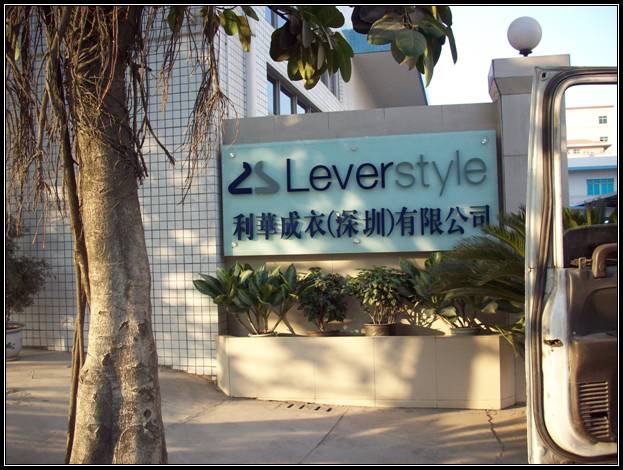
Basic Info
Lever Style Corporation was established in 1956. Hong Kong Lever, Shenzhen Artigas Clothing & Leatherwear Co. Ltd., Lever Shirt Shenzhen Factory Ltd., and Glad Garments Co., Ltd. all
belong to the company. Ranked top five in the garment and apparel industry, Lever Style has acquired both ISO9000 and SA8000 certification and mainly produces dress shirts for export.
This report concentrates on Lever Shirt Shenzhen Factory Ltd. and provides a general overview of the factory, but all three Lever factories share similar conditions.
Address: 39 Fuqian Road , Dashuikeng Guan Lan Town , Bao'an District, Shenzhen , China ( 39 ? )
Phone: 86 (755) 2980 7870
Website: www.leverstyle.com
Lever Style Corporation's Clients: Abercrombie & Fitch, Ann Taylor, Armani Exchange, Banana Republic, Calvin Klein, Cerruti 1881, Giorgio Armani, GAP, Hugo Boss ? J.Crew, John Varvatos,
Paul Smith and etc.
Number of workers at Lever Shirt Shenzhen Factory Ltd.: Roughly 2,000 workers, with a male to female ratio of 1:9

Tags obtained from Lever Style
Contract
Lever Style requires new applicants to provide a personal ID and a health certificate. Workers with no health certificate are required to obtain one from any of the local clinic
facilities. According to an interviewed worker, upon recruitment, Lever Style collects new worker's ID and withholds it for three to one week. The reason given was that Lever Style
needs to take the IDs to open up bank accounts for new workers. However, procedure of opening up bank account only requires one day, instead of three days to one week. After one week of
employment, the company will give workers a labor contract to sign. The contract is in compliance with China 's labor laws; both the factory and workers are able to obtain a copy of it.
Details of the contract cover eight major areas: contract duration, work post, work hour and break, wage, work safety, social insurance, work rules and regulations, and contract termination
and cancellation. Other agreements include contract cancellation details and details relating to compensation, change of work posts and wages.
According to workers, before 2007, the contract duration ranged from a year to a year and a half. Since 2008, the contract duration has generally been extended to two years.
As few workers understand their rights, very few keep their contracts.
From the recruiting notice posted on Lever Style's main gate, currently, Lever Style is only recruiting female workers.
Work hour
At Lever, the first half of the year is slow season and the second half is peak season. However, according to interviewed workers, there is no major difference between slow and peak
season. Besides a few departments, all Lever Style departments work for two shifts, day and night.
Below is the schedule:
Day Shift Night Shift
7:45AM~12:45PM 7:45PM~12:45AM
1:45PM~4:45PM 1:45AM~4:45AM
Overtime 4:45PM~6:45PM 4:45AM~6:45AM
Daily overtime does not exceed three hours, and monthly overtime does not exceed 65 hours. Generally, daily overtime is about two hours, Saturdays and Sundays being days off.
On some occasions, Lever Style will arrange workers to work on Saturdays.
According to workers, during the peak season, piece-rate workers' work hours may exceed those of hourly paid workers, but even then work hours are never more than 85 hours a month.
Wages
Lever Style calculates workers' wages according to the local minimum wage, which is eight daily work hours * 21.75 work days a month * 4.31 hourly wage= 750 RMB. Overtime on regular
days is 6.46 RMB/hour, 8.62 RMB/hour for weekend overtimes, and 12.93 RMB/hour for holiday overtime. The factory distributes wages on the 12 th of each month
through bank wiring.
Piece rate workers' wages depends on their work posts and products. For example, if a worker's hourly production rate is more than 4.7 RMB, Lever Style will calculate that
worker's wage by piece rate, ensuring that the worker is earning more than 4.7 RMB an hour, in addition to a bonus equivalent to 10 percent of that worker's monthly wage.
Low-level managers such as team leaders earn an average wage of 1,400 RMB in addition to a bonus equivalent to 15 percent of their total wages (not including awards such as attendance awards).
Benefits and Remuneration
Lever Style provides medical and work injury insurance to all workers. New workers were unsure whether they had pensions and a group of senior workers said Lever Style does provide
any pension. Unfortunately, none of the workers interviewed had preserved their wage statements or other related documents, making an accurate calculation difficult..
A reading room is in the workers' dormitory and is open to workers during their rest hours at no cost. An internet café is also installed, though since the café is
not operated by Lever Style, workers have to pay to use it.
In terms of activities, Lever Style also holds cultural events for workers during major holidays.
According to information provided by the company, workers are able to enjoy paid maternal leave. However, according to workers, most pregnant workers would not apply for such benefits.
Instead, they choose to quit their jobs and return home.
Canteen and living conditions
Lever Style has a canteen built on factory site, providing breakfast, lunch and dinner to workers. Meals must be paid for in cash. Breakfasts are generally composed of congee, rice
noodle soup, bread and etc, for which workers are charged between 1~1.5 RMB per meal. Lunch and dinner cost 2.5 RMB per meal and they have the choice of more than ten dishes; workers
are able to choose three vegetable dishes and one meat dish with a soup. In order to serve the meals, canteen offers disposable and stainless plates for workers to choose. Most of workers
choose to dine at the canteen due to its sanitation.
On the factory site, there are four female dormitories and one male dormitory. Each building consists of five floors, each floor having ten rooms, and each room housing up to eight
workers, though generally only about six workers share one room. Each room is equipped with a balcony, bathroom, public pay phone, two fans, and a bed and storage container for each
worker. In each dormitory hallway, a vending machine, and hot and drinking water spigots are installed. Moreover, an internet café that has not been registered officially is
installed in the dormitory with illegal gambling machines.
Workers working the night shift complain that the time Lever Style allows for using drinking water is unreasonable for night shift workers.
Factory deducts 60 RMB as monthly rent from workers who live in the dormitory. The rent /includes the 60 degree (30 degree in winter) monthly electricity limit for each room, and any
rate above the limit is paid by the workers who share the same room. There has not yet been a case of anyone exceeding the electricity limit.
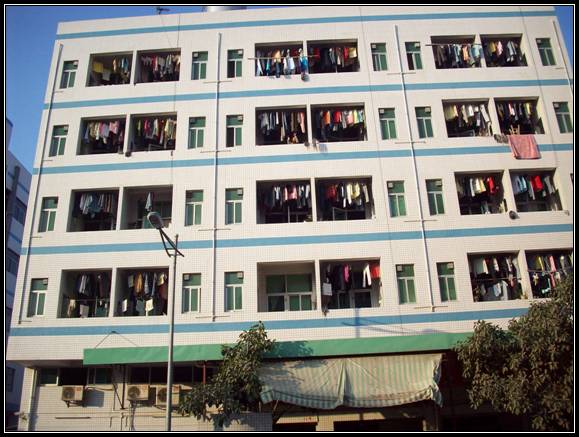
Lever Style Dormitory's exterior
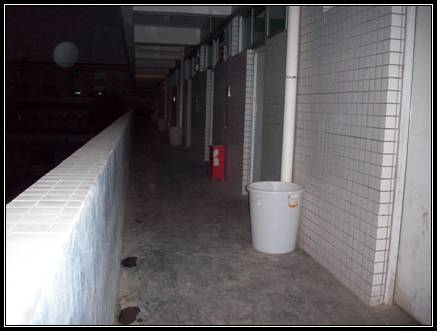
Hallway that leads to workers' dorm rooms
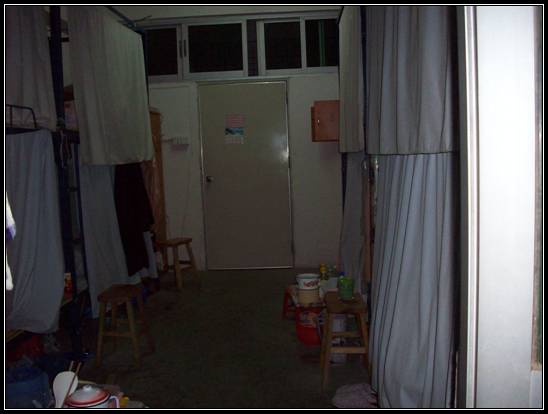
Inside workers' dormitory, a room that houses six to eight workers
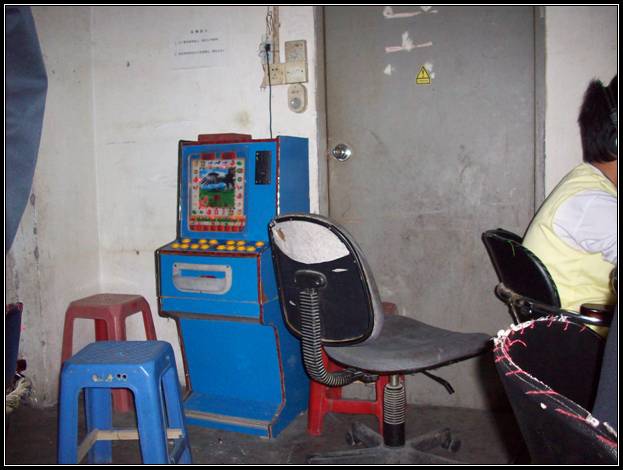
Illegal gambling machine installed in the internet cafe
Work conditions
Lever Style has one four story and one two story workshop buildings. The two story building is smaller than the other, mainly for storage and trash. The four story workshop building
mainly engages in sample product production and textile cutting. The second and third floor is sewing department, focusing on sewing the product together. The first floor is packaging
and clothing bleeding workshop, which finalizes and packages the finished products.
Air conditioners are installed in the workshops. During the winter, room temperature is able to stay at 25C average. Factory does not restrict workers the times to drink water or use the
bathroom during work hours. The relationship between management and workers are harmonious as managers have pleasant attitude.
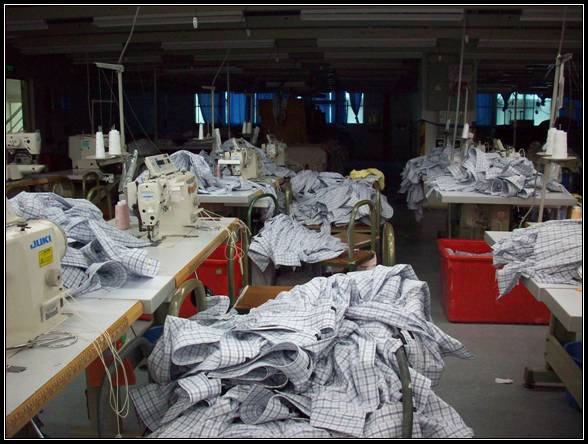
A Lever Style sewing workshop
Safety Issues
Upon recruitment, workers are arranged to Qinsheng Co. for one day work training. Workers then are able to work at their assigned post. Training does not provide much safety-related
information. When a work injury occurs, Lever Style offers medical expenses and wage during the recovery period.
Lever Style provides work supplies to workers, including masks, goggles, gloves and etc. and renews supplies regularly. However, since the training does not cover safety issues,
many workers are unaware of the importance of the supplies and often do not put on the necessary equipment.
Lever Style appoints pregnant or sick workers to a special unit. This unit requires a smaller amount of tasks and only operates on the day shift, with no overtime.
Other
According to workers, at Lever Style, manufacturing a product consists of four main procedures, cutting, sewing, heating and bleeding. Among the four main procedures, there are about
240 small tasks required to complete one item. According to a mid level supervisor, in order to complete one item, it would need about 200~300 workers to work together. Normally, a
sewing department consists of 80 workers who are able to sew about 600 items in eight hours.
Accommodation
Rent:
1. One bedroom apartment with one living room: 400 RMB ~ 450 RMB
2. Two bedroom apartment with one living room: 600 RMB ~ 800 RMB
3. Three bedroom apartment with one living room: 800 RMB ~ 1,100 RMB
Above rent does not include utilities
Utility:
Gas: 125 RMB per container
Meal:
- To dine in the factory cafeteria will cost a couple a total of 420 RMB (56 USD) per month.
Dine at home on a Sunday costs about 15 RMB (2 USD) per Sunday thus about 60 RMB (8 USD) per month
- Breakfast costs about 4 RMB (0.53 USD) per day, 120 RMB (16 USD) per month.
In terms of eating at home below is the local commodity price chart.
1 Jin = 500 gram (g)
Rice:
High Quality: 4.16 RMB/Jin
Average: 2.8 RMB/Jin
Low Quality: 1.7/Jin
Pork:
1. Lean Meat: 16 RMB/Jin
2. Fat Meat: 12 RMB/Jin
3. Rib: 18 RMB/Jin
Beef:
1. 18 RMB/Jin
Chicken:
High Quality: 22 RMB/Jin
Average: 16 RMB/Jin
Low Quality: 8 RMB/Jin
Fish:
Carp: 4.8 RMB/Jin
Cod: 6.2 RMB/Jin
Grass Carp: 5.5 RMB/Jin
Misgurnus anguillicaudatus: 12 RMB/Jin
Monopterus alba: 21.5 RMB/Jin
Other:
Vegetable: 1 RMB ~ 2.8 RMB/Jin
Beans: 1.2 RMB ~ 4.8 RMB/Jin
Melons: 0.88RMB ~ 3.8 RMB/Jin
Ginger/Garlic/onion: 4.8 RMB ~ 15 RMB/Jin
Vegetable Oil:
High Quality: 14 RMB/Jin
Average: 9 RMB/Jin
Low Quality: 5 RMB/Jin
Children's Education
Kindergarten:
Partial Care (Including meal): 6,000 RMB/year
Full Care (Including meal and accommodation): about1,2000 RMB/year
Elementary: 1,000RMB/semester, 2,000RMB/year
Based on the information above, a couple's annual expense:
1. Rent: 450 RMB/month *12 months= 5,400 RMB
2. Living expense (Meals and etc.): Family with three members: 900 RMB/month * 12 months= 10,800 RMB
3. Children's education: 6,000 RMB/year
4. Medical insurance and Pension: 400 RMB/month * 12 months= 4,800 RMB
5. Clothes: 1,500 RMB/year
6. Other Expense: 2,000 RMB/year = 2,000 RMB
Total Expense: 30,500 RMB